A tire's load pressure durability and tire ply rating go hand in hand. When looking for new tires, often getting the higher load capacity tire might seem like a good idea. But, is that really the case?
Often purchasing the old reliable load range is better. This is where Load Range E tires come into play. They are popular, they offer good performance, and the load range E weight capacity is nothing to sneeze at.
E-rated tires are perfect for wheels handling heavy loads daily. They ensure the durability, controllability, and performance of the vehicle.
The load-carrying capacity of light trucks is categorized by their load range. The load range letter of each tire determines the maximum load pressure a single tire can handle. Depending on this letter, the tires have more or less durable constructions.
Tires with higher load ranges are able to carry heavy loads, as the tire's plies maintain their ideal tire shape. As the tires do not deform, they are able to also offer better traction, even with LT flotation models. Furthermore, the load range letter will also determine the maximum allowable PSI levels of the specific tire.
Typically light truck, trailer, and commercial truck tires require the highest load ranges available on the tire market. But, what is the max load capacity of these tires? Let's take a look.
On this load range chart, you will see all the important information regarding load range ratings.
Now, the question arises: what is the difference between load range and load index capacity?
Simply speaking, the load index is used for P-metric sizes, while the load range is for trailer and LT tires. The difference is simply their ply structure and load-carrying capacity.
However, when looking at things closely, their maximum load capacity makes a huge difference between the tire type categories.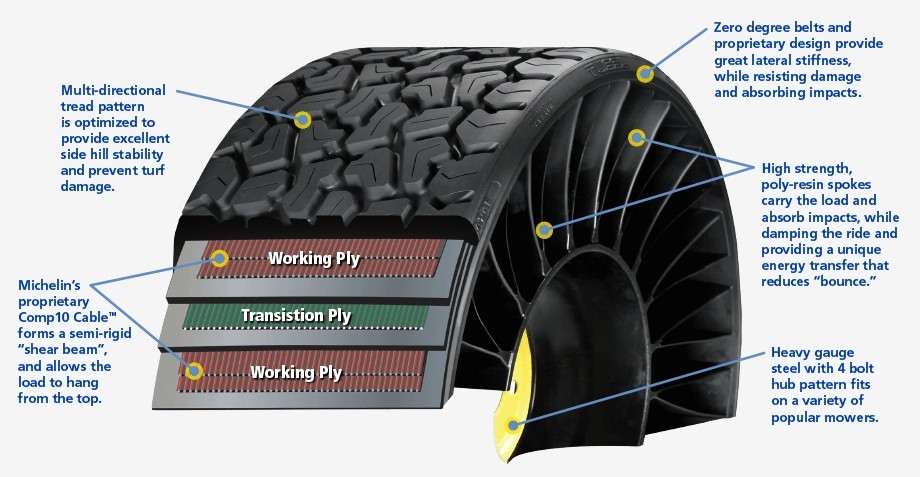 This is due to it affecting the tires' performance, traction, fuel efficiency, tread life, etc.
This is due to it affecting the tires' performance, traction, fuel efficiency, tread life, etc.
The max load durability of P-metric sizes is measured in with load index. The tire load index capacity is represented with numbers, which show the load capacity of passenger cars and SUV tires.
Check out the Tire Load Index Chart below:
Additionally, they can also be separated into Standard Load and Extra Load tires - which are more reminiscent of load ranges. This determines the maximum pressure (load and driving) that SUV and passenger tires can handle safely. Even extra load tires are weaker than LT-metric sizes.
You can find the load index on the tire's sidewall before the speed rating. Together they form an alphanumeric code that represents the speed and load capacity of each tire. They will differ from tire to tire, depending on the tire size and performance.
As the load range rating tells you the maximum load capacity of each tire, there will be certain tires that offer less or more plies in their construction.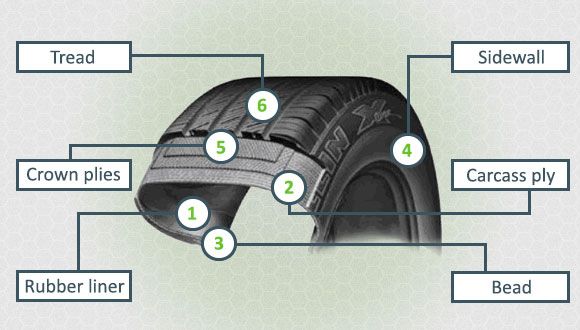 So, where do E-rated tires belong?
So, where do E-rated tires belong?
Load range E tires come with a 10-ply rating. This means that the construction of the tire offers equivalent strength to a 10-ply structure, but it does not necessarily feature 10 plies. As an example, the actual meaning of the E rating is that a single tire can handle 1,520 lbs at 80 PSI.
This means that all the tires with this rating will have the same maximum load carrying capacity thanks to the cord layers, plies, and internal structure. They are able to carry more load than a load range D or C tire, but less than a load range H size. This is the same for both radial and bias-ply tires.
Load range E is a 10-ply rated tire. However, this does not mean that load E tires feature a 10-ply construction. Usually, the tires have 1 or 2 plies, which are equivalent in their strength to 10 plies. This construction offers the load range E weight capacity, which is 1,520 lbs/tire.
No, passenger tires cannot be load range E. Manufacturers build these tires with standard load or extra load ratings, but they are not equivalent to LT-metric load ratings.
Manufacturers build these tires with standard load or extra load ratings, but they are not equivalent to LT-metric load ratings.
In fact, most SUV and passenger tires all feature 4-ply ratings. Pay close attention to their sidewall, where you can see their load index and speed rating, as well as their standard load or extra load specifications. Still, keep in mind that the tire load index capacity is less than a load range E max load rating, as passenger tires with load index ratings are smaller.
Let's complicate things even more! Did you know that E1 and E2 load range ratings exist?
Generally speaking, both of these ratings offer the same maximum load and performance. However, the difference is between their sizes.
E1-rated tires have lower than 305mm footprint widths. They require 80 PSI to perform at the desired level and load capacity. This type of tire is perfect for on-road use, as its footprint optimizes its road gripping ability.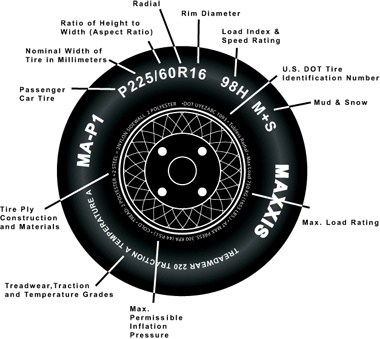 Whether they are trailer tires or are used for towing, they will offer excellent driving safety for the vehicle.
Whether they are trailer tires or are used for towing, they will offer excellent driving safety for the vehicle.
On the other hand, E2-rated tires are tire sizes that feature 305mm and wider footprints. They run at lower PSI levels than E1 tires, as they need only 65 PSI to perform. This improves their flotation, which is important for off-road use.
You might have heard of flotation tires regarding agricultural equipment. These tires use less air pressure levels to offer the same performance and traction, without ruining the soil and field quality. E2-rated tires are similar, as they use LT-flotation to grip the surface and optimize their off-road traction.
Yet, even at lower PSI levels, load range E2 tires offer the same max load-carrying capacity.
Depending on the tire ratings, specific tires offer various maximum pressure durability. For example, a tire load range E rating means that the specific model and size can handle 1,520 lbs at 80 PSI.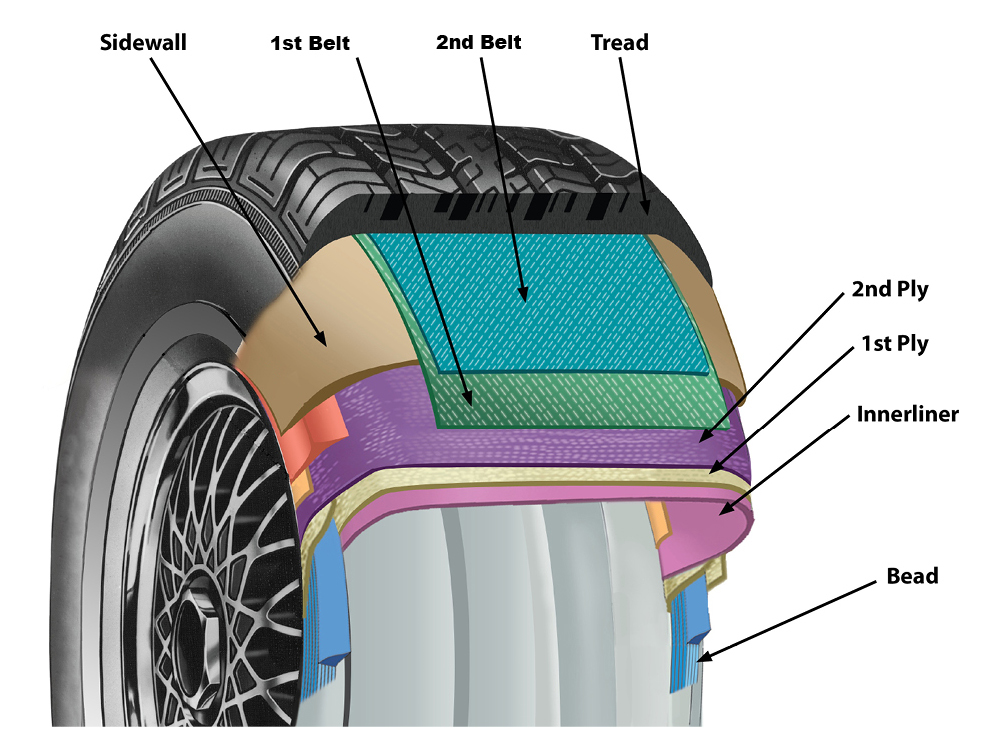 In other words, when the trailer or light truck tires hold the correct air pressure levels of 80 PSI, they can carry 1,520 lbs/tire.
In other words, when the trailer or light truck tires hold the correct air pressure levels of 80 PSI, they can carry 1,520 lbs/tire.
When it comes to light truck tires, and even some trailer tires, models with the tire load rating E are among the most popular ones. There are good reasons for this!
The E ply rating offers the necessary maximum load pressure durability for LT tires. This optimizes vehicle performance, the tire load-carrying capacity, and versatile surface grip, all without hindering the tire's durability.
Combine with their wider range of speed rating options and tire sizes, E-rated tires offer all desired characteristics light truck owners are looking for. Just remember, it is important for all four tires to have the same load range for the vehicle to securely perform.
Yes, Load Range E tires are good, as they provide the necessary load durability.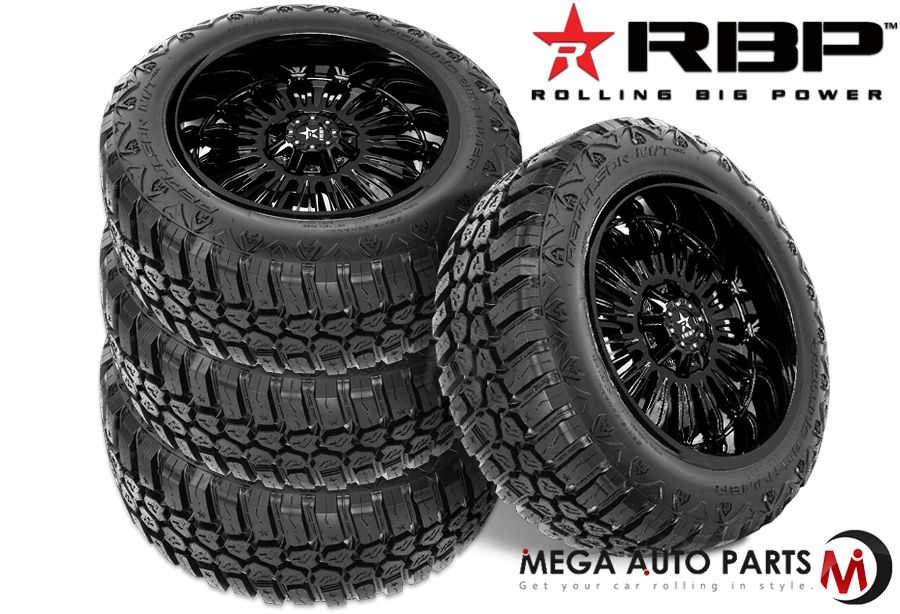 They are able to typically carry 1,520 lbs at 80 PSI without issues. This makes them perfect for most light trucks, which require higher tire load range capacity.
They are able to typically carry 1,520 lbs at 80 PSI without issues. This makes them perfect for most light trucks, which require higher tire load range capacity.
Load range D and E tires have different weight capacities. For example, a load range D tire can handle 1,220 lbs at 65 PSI, while an E tires carry loads at 80 PSI. If looking at their load durability, load range E tires are better, but that is the only difference between them.
Yes, all load range E tires are 10 ply. This is because load range is determined by the number of plies the tire's construction has. Therefore, load range E means that the tire sports a 10-ply structure, which corresponds with its load durability.
The numbers you see on the sidewall of a tire, contain valuable details about the tire. The alphanumeric code holds in itself the complete description of the tires, which helps people decide whether a tire is suitable for their vehicle or not.
A typical code on a Light Truck & SUV tire looks like; 35(Diameter)x12.5(Width)R20(Rim Size) E(Ply Rating) and our tires will have another spot on the tire with Load Index and Speed Rating. A speed rating will be an alphabetic number ranging from L-Z stating how fast the tire is rated for. Load Index will be numeric and will run from 0 - 150. The load index is typically found next to the speed rating. The load index will tell you the load capacity of the tires and will typically be first before the speed rating. For instance, our Claw 35x12.5R20 E has a load index of 121 and a speed rating of Q. To understand the actual meaning of the code, you need to read a tire load capacity chart.
The load rating of the tire displays the weight a tire can carry. The product of the load capacity of a single tire and the number of tires determines the load carrying capacity of all the tires combined. The rating of 121 shows that it has a load capacity of 3297LBS. Multiply that by four tires (4 x 3,297 = 13,188 pounds) to get your vehicle's max load carrying capacity. Always remember to install tires that have a load index that is equal or greater than your original factory-installed tires.
Multiply that by four tires (4 x 3,297 = 13,188 pounds) to get your vehicle's max load carrying capacity. Always remember to install tires that have a load index that is equal or greater than your original factory-installed tires.
Load range is the older measurement standard of "PLY Rating." This refers to the construct of the tire, which is made out of rubber and cord layers referred to as “plies.” Historically, more plies meant a tire had a larger load carrying capacity, so manufacturers would count a tire’s plies and use this number to denote carrying capacity. However, the modern construction of tires uses fewer piles without sacrificing the carrying capacity. Therefore load range simply tells how tough the tire is and the allowable PSI. For example, an “E” load range indicates that a tire is equivalent to a 10-ply construction tire. In realitly, this tire is not built with 10 plies, but rather one or two plies of equivalent strength.
More Info
More Info
 5-11"
5-11"More Info
SHOP BY TIRE SIZE
Information about industrial and industrial tires
For over a decade, BKT has developed many different OTR radial patterns and sizes for specific applications and environmental conditions such as snow, mud and dirt, rocks, recycling or even underground mining. Production started with smaller loaders, then added rigid dump truck tires, and finally reached the Giant segment. nine0003
At the moment, BKT has over 40 tread patterns.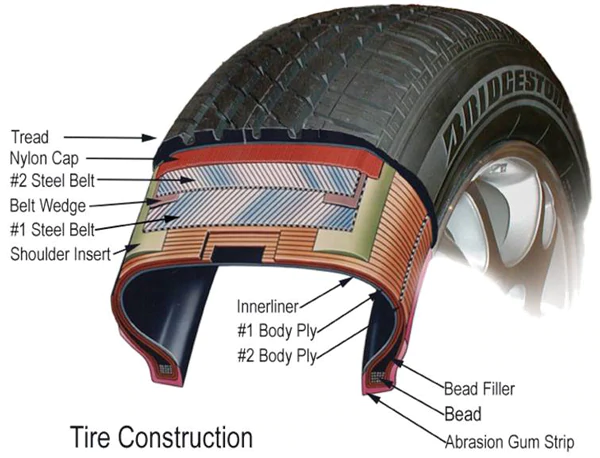 And if you consider that each pattern has different sizes, you get more than 200 tires.
And if you consider that each pattern has different sizes, you get more than 200 tires.
Every minute of downtime for a single piece of equipment, whether it be a mining truck, loader or any other mining vehicle, is considered a loss for management. Everyone knows that time is money.
About 30% of operating costs at large OTR facilities such as mines are invested in tires. Therefore, choosing the right tire is a critical factor for maximum life and maximum performance. Frequent failures, downtime and excessive tire changes are often the result of using the wrong tire for the job. nine0003
When talking about the classification of earthmoving tires, the standards of the two main tire companies are taken into account. Each operation has its own TRA code - C-E-G-L, SH: compaction, transportation, leveling, loading and underground transportation. There are also sub-codes such as C1 or E1 which denote a smooth tread type or regular rib. The first is a tire for compaction, the second is for transportation. There are many specific types of tread, for flotation, rock pattern, etc., which are always combined with a specific operation. nine0003
There are many specific types of tread, for flotation, rock pattern, etc., which are always combined with a specific operation. nine0003
Although different standards do not define different tread depths for any other code, which is in fact in the hands of the tire designer, there are general guidelines that allow comparison between different tread types from normal to very deep. BKT oversized tires comply with this general rule, which is important to know for specific applications. For example, junkyard work typically requires an L5 pattern code to improve puncture resistance and improve tire life. nine0003
According to ETRTO standards, tires for earthmoving machines are divided into three main groups. These are narrow profile tires with a height to width ratio of 0.95, wide profile tires with a height to width ratio of 0.85 and tires of the 65 series with a height to width ratio of 0.65. Although in the OTR section, tire sizes are usually tied to specific equipment, the need for increased load capacity is an important issue.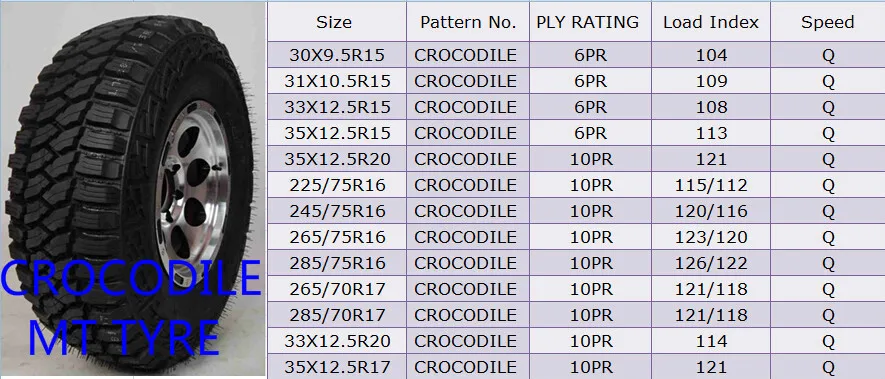 This explains the introduction of new sizes with a low height to width ratio of 65. nine0003
This explains the introduction of new sizes with a low height to width ratio of 65. nine0003
Basically, it all depends on the load index, the ply rate and last but not least, the so-called star rating, which is very typical in the world of OTR tires. The load index is the easiest way to determine the load capacity, a numerical code that is directly related to the tire's maximum load capacity in "kg". Although it is simple, it is not yet very common in the OTR world. It usually takes some time to switch to another encoding that people are not used to. For each type and size of tires, the load capacity is always associated with a specific tire pressure as defined by the ETRTO standards and the Manufacturer's Technical book. The ply rating is primarily used for conventional tires and originally determined the number of plies in a tire carcass structure. Materials have changed over the years: cotton, viscose, polyester, nylon, aramid. The strength of the new cord has increased, and this has led to an overall reduction in the number of layers, but the coding has remained the same.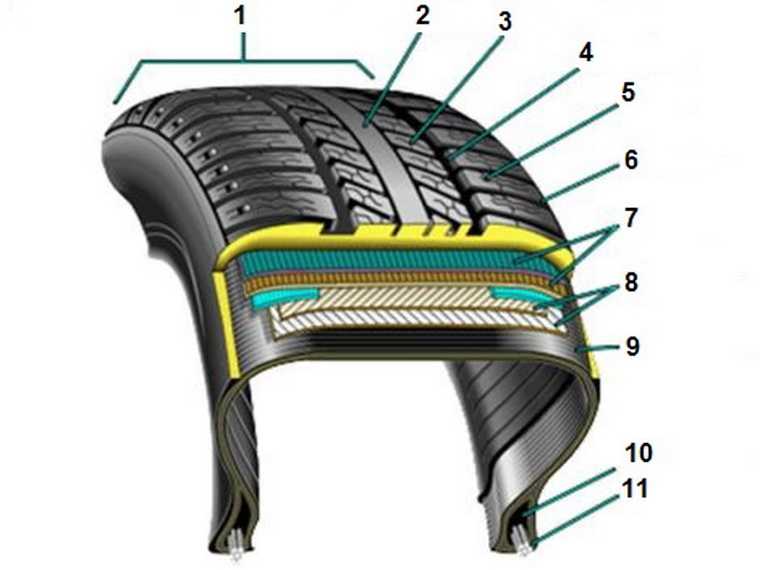 The code is printed on the sidewall of the tire and determines the load capacity of the tire, not the actual number of plies. nine0003
The code is printed on the sidewall of the tire and determines the load capacity of the tire, not the actual number of plies. nine0003
While the load index we mentioned earlier is an absolute measure, the ply rate depends on the size of the tire, because at the same tire pressure you will get different load capacities with different tire sizes.
The star rating indicates the load capacity of OTR tires. Sometimes its use can be misleading. Remember that the load capacity through the star rating depends on the tire size, the tire pressure and the TRA marking with the so-called code codes E - L, etc. To give an example: A 26.5R25**L4 tire has a different load capacity than a 26.5R25* tire *E4. It is not true that one star means less load capacity than a double star! It also depends on the type of application and tire pressure. nine0003
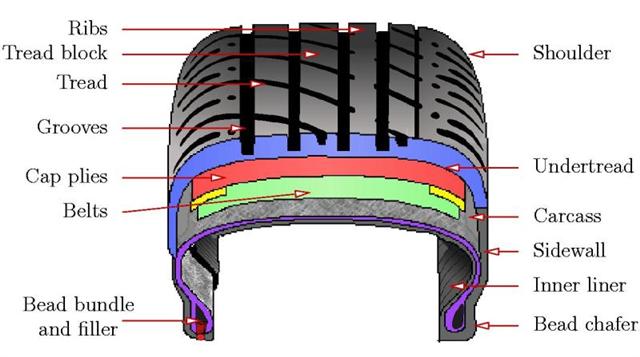
BKT always tells end users that tire maintenance is an important requirement, both in terms of efficiency and profitability. If tire maintenance is important in agriculture, namely a high power tractor (more than 250 hp) that weighs about 13 tons. Obviously their tires must be kept in good condition as they are used for heavy duty work. Now take a mining truck that has at least 10 times the power of a large tractor and has a load capacity of at least 250 tons. And it's fitted with huge 57-inch Giant tires. Now you can imagine how important tire maintenance is for such extremely large equipment that operates in difficult conditions. The same applies to smaller sizes. nine0003
These are all important issues to consider. It all starts with a focus on continuous innovation at the development stage. To meet all the complex requirements placed on OTR tires, advanced technology is needed. It is essential that all tire components, including the inner skin, belt, tread and bead, sidewall, carcass and bead fillers, and reinforcements, are state of the art..jpg) This means researching and improving innovative materials as well as precise analysis and of course investing in first-class equipment from premium suppliers around the world. Therefore, BKT can improve the consistency of the compound during the mixing process, achieve the best adhesion and improve the final quality during the calendering process, use high-precision cutting, and also guarantee an optimized environmental tire manufacturing process. nine0003
This means researching and improving innovative materials as well as precise analysis and of course investing in first-class equipment from premium suppliers around the world. Therefore, BKT can improve the consistency of the compound during the mixing process, achieve the best adhesion and improve the final quality during the calendering process, use high-precision cutting, and also guarantee an optimized environmental tire manufacturing process. nine0003
Continuous quality control and tire modeling are essential steps before a new OTR tire rolls off the production line. There is a whole world behind BKT tires.
Return to list
Well, it's time for you to take care of buying a new set of tires. Of course, you will have a final opinion about the chosen model only after you have driven several thousand kilometers. Perhaps everything will suit you, or perhaps some aspects will disappoint you .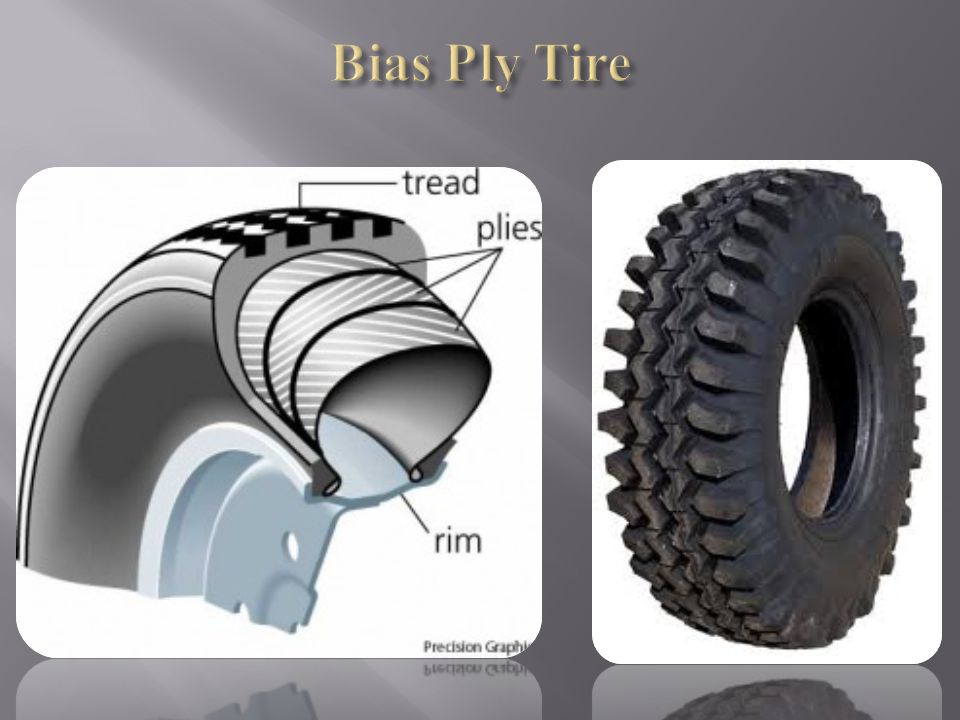 .. Nevertheless, a lot of useful information could be obtained even in the tire salon. It was enough just to read the inscriptions on the sidewall. nine0003
.. Nevertheless, a lot of useful information could be obtained even in the tire salon. It was enough just to read the inscriptions on the sidewall. nine0003
Alas, most of us are limited to reading the name of the manufacturer, the name of the model, and, well, the dimension. And if you should not expect any problems with identifying a tire by manufacturer and model, then with the dimension, in fact, everything is not so simple ...
As a rule, the dimension is indicated by three digits in the format XXX / XX R XX. The first three digits are the profile width in millimeters. Profile, not tread! And if you attach a tape measure to the tire, then the tread width, as a rule, will be less than the three-digit number given. The second two-digit number is the profile height, but not its absolute value, but the ratio of the profile height to its width, expressed as a percentage. However, off-road enthusiasts are well aware that the mud tires they respect so much, as a rule, have a completely different designation.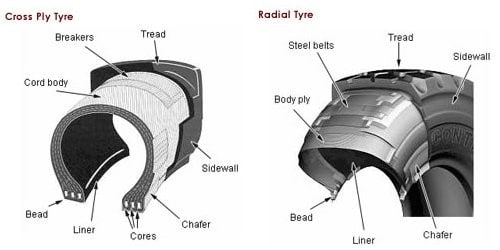 In this case, the first number is the overall diameter of the tire in inches, and the second is the profile width, again in inches, for example, 33/12.5 or 31/10.5. After all, it is critically important for them that the tire has sufficient width: the larger the width and outer diameter, the larger the area of the contact patch, the less pressure on the ground and the higher the ability to roll over an obstacle. But at the same time, the tire must still fit in the wheel arches, even with technical tricks in the form of a lift ...
In this case, the first number is the overall diameter of the tire in inches, and the second is the profile width, again in inches, for example, 33/12.5 or 31/10.5. After all, it is critically important for them that the tire has sufficient width: the larger the width and outer diameter, the larger the area of the contact patch, the less pressure on the ground and the higher the ability to roll over an obstacle. But at the same time, the tire must still fit in the wheel arches, even with technical tricks in the form of a lift ...
This is followed by the letter R. Contrary to popular belief, it does not mean the word "radius" at all, but that the tire has a radial construction (which does not negate the fact that you will see the word RADIAL on another sidewall). By the way, initially all tires had a diagonal design, in which the cord threads that make up the inner frame went diagonally from bead to bead. But in 1914, Hamilton and Sloper patented a tire design in which the cords were sewn in the transverse direction. This design turned out to be more difficult to manufacture and repair, but it gave a number of advantages: the mileage of such tires became higher, and the tendency to slip under lateral loads was less, and the tension of the threads under loads was lower, which made it possible to reduce the number of carcass layers. So, although the development of mass production of such tires took almost 25 years, today almost all tires have a radial design. Nevertheless, for general development, let us clarify that diagonal tires are still produced today, for example, for motorcycles, trucks and special equipment. In this case, instead of the letter R in the dimension, there will be the letter D or a dash, and if the tire has a diagonal belt design, then the letter B will be in this position. In addition, for complete clarity, the manufacturer can put the inscription RADIAL or DIAGONAL on the sidewall. nine0003
This design turned out to be more difficult to manufacture and repair, but it gave a number of advantages: the mileage of such tires became higher, and the tendency to slip under lateral loads was less, and the tension of the threads under loads was lower, which made it possible to reduce the number of carcass layers. So, although the development of mass production of such tires took almost 25 years, today almost all tires have a radial design. Nevertheless, for general development, let us clarify that diagonal tires are still produced today, for example, for motorcycles, trucks and special equipment. In this case, instead of the letter R in the dimension, there will be the letter D or a dash, and if the tire has a diagonal belt design, then the letter B will be in this position. In addition, for complete clarity, the manufacturer can put the inscription RADIAL or DIAGONAL on the sidewall. nine0003
The two numbers following the letter R indicate the DIAMETER of the tire's landing rim in inches, so the common expression "tires of such and such (for example, 16th) radius" is absolutely illiterate.
Not far from the dimension, the load and speed index is usually placed: a two-digit number and a letter of the Latin alphabet. And here, in order to understand what the combination of 92T or 99W means, you still have to look at the table (unless, of course, you have an eidetic memory or have not graduated from intelligence school, where you were specially trained to memorize large amounts of information). The full table starts at zero (which corresponds to a maximum load of 45 kg per wheel) and ends with a value of 279(13,600 kg per wheel), but we are interested in the range from 62 (265 kg) to 126 (1700 kg / wheel), since this range fits all conceivable loads that tires of cars, crossovers and SUVs can experience.
| Loof index | Study 9000 9000 9000 9000 9000 0094 1000 | ||||||||||||||||||||
| 63 | 272 | | 86 | 530 | | 109 | 1030 | ||||||||||||||
| 64 | 280 | | 87 | 545 | | 110 | 1060 | ||||||||||||||
| 65 | 290 | | 88 | 560 | | 111 | 1090 | ||||||||||||||
| 66 | 300 | | 89 | 580 | | 112 | 1120 | ||||||||||||||
| 67 | 307 | | 90 | 600 | | 113 | 1150 | ||||||||||||||
| 68 | 315 | | 91 | 615 | | 114 | 1180 | ||||||||||||||
| 9000 69 | 325 | | 92 | 630 | | 115 | 1215 | ||||||||||||||
| 70 | 335 | | 93 | 650 | | 116 | 12500003 | | 94 | 670 | | 117 | 1285 | ||||||||
| 72 | 355 | | 95 | 690 | | 118 | 1320 | 73 | 365 | | 96 | 710 | | 119 | 1360 | ||||||
| 74 | 375 | | 97 | 730 | | 120 | 1400 002 98 | 750 | | 121 | 1450 | ||||||||||
| 76 | 400 | | 99 | 775 | | 122 | 1500 | ||||||||||||||
| 77 | 412 | | 100,0003 | 800 | | 123 | 1550 | ||||||||||||||
| 78 | 425 | | 101 | 825 | | 124 | 1600 | ||||||||||||||
| 79 | 437 | | 102 | 8500003 | | 125 | 1650 | ||||||||||||||
| 80 | 450 | | 103 | 875 | | 126 | 1700 | ||||||||||||||
| 81 | 462 | | 104 | 900 | | | | ||||||||||||||
| 82 | 475 | | 105 | 925 | | | | ||||||||||||||
| 83 | 487 | | 106 | 950 | | | A7 | A8 | B | C | D | E | F | G | J | K | L | M | N | ||
| Speed, km/h | 5 | 10 | 15 | 20 | 25 | 30 | 35 | 40 | 50 | 60 | 65 | 70 | 80 | 9000 | 100 | 110 | 0 | 130 | 140 | ||
| ИНДЕКС СКОРОСТИ | P | S | T | H | V | V0002 W | Y | VR | ZR | ZR(Y) | ||||||
| СКОРОСТЬ, КМ/Ч | 150 | 160 | 170 | 180 | 1903 | 210 | 240 | 270 | 9000 300 9000 > 2102> 210> 210202> 210 >0000>0003 | >240 | >300 | |||||
Well, the above examples can be deciphered as follows: the first tire is designed for a load of up to 660 kg per wheel, when driving at speeds up to 190 km / h, the second - 775 kg at speeds up to 270 km / h. At the same time, it must be clearly understood that the W or Y speed index does not imply that you can safely drive at a speed of 270 or 300 km / h even in a straight line, not to mention making some kind of maneuvers. It indicates only the ability of the tire to withstand the loads that occur at such speeds. nine0003
At the same time, it must be clearly understood that the W or Y speed index does not imply that you can safely drive at a speed of 270 or 300 km / h even in a straight line, not to mention making some kind of maneuvers. It indicates only the ability of the tire to withstand the loads that occur at such speeds. nine0003
Next, consider the inscriptions that indicate the purpose of a particular tire. The American labeling standard unequivocally prescribes that signs be applied to the surface of the sidewalls indicating the target affiliation of a particular product: tires for passenger cars must carry the sign P (Passenger), tires for light trucks are designated by the letters LTP or LT (Light Truck Personal and Light Truck, respectively) , and spare wheels - “stowaways” - must bear the designation T (Temporary). nine0003
The European marking does not have such strict standards, but here, too, tires can be marked with their purpose or features of operation. For example, on tires designed for SUVs and four-wheel drive vehicles, "4x4" is indicated, on tires for commercial vehicles - C, that is, Cargo or Commercial. In this case, the prefix C is between the dimension indicator and the load index, for example, 31x10.50R15 C 109R.
In this case, the prefix C is between the dimension indicator and the load index, for example, 31x10.50R15 C 109R.
Letter designations that indicate the purpose of a particular tire may also be included in the model name. So, the letters M / T (Mud Terrain) denote mud tires, A / T (All Terrain) - universal off-road, H / T (Highway Terrain) - road, U / T (Urban Terrain) - city, H / P ( High Performance) - high-speed, racing. For example, Toyo's Open Country family has tires in all of these categories, with the exception of H/P. nine0003
The next group of designations is associated with seasonality. Tires can be winter, summer or all season. Winter tire markings include a snowflake pictogram as well as Winter inscriptions. As for the marking M + S (Mud + Snow, "mud and snow"), then everything is not so simple. Most often, tires with the M + S marking turn out to be not purely winter, but rather all-weather, and winter in this case means “European” rather than “Scandinavian” or “Russian”.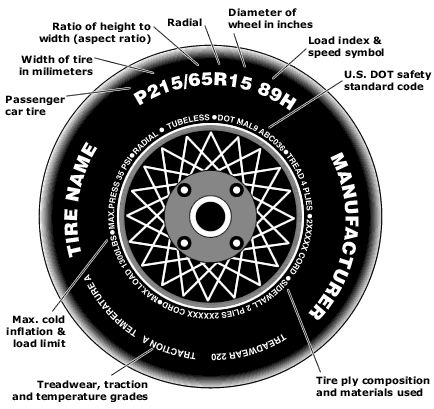 In Russia, only a “snowflake” indicates winter tires. But such tires should not be considered really off-road or mud either! As a rule, they have an insufficiently sparse tread pattern, and therefore, on soft soils, they instantly “wash out”, turning into “slicks”. A lot of new off-road riders have experienced a major disappointment, thinking that M+S tires are just what they need ...
In Russia, only a “snowflake” indicates winter tires. But such tires should not be considered really off-road or mud either! As a rule, they have an insufficiently sparse tread pattern, and therefore, on soft soils, they instantly “wash out”, turning into “slicks”. A lot of new off-road riders have experienced a major disappointment, thinking that M+S tires are just what they need ...
Three pictograms are applied to the sidewalls of tires, which are not only, but also positioned as all-season tires: with the image of a snowflake, clouds with raindrops and the sun. In addition, such tires may carry additional markings on the sidewalls AW (All Weather, “all-weather”), A.G.T. (All Grip Traction, "traction in all conditions") or AS (All Season, "all-weather").
On the sidewalls of summer tires, additional signs can be applied in the form of an umbrella icon, as well as the words Aqua, Aquatred, Water, Aquacontact or Rain. This marking indicates that this tire model has increased resistance to hydroplaning and can be considered "rain".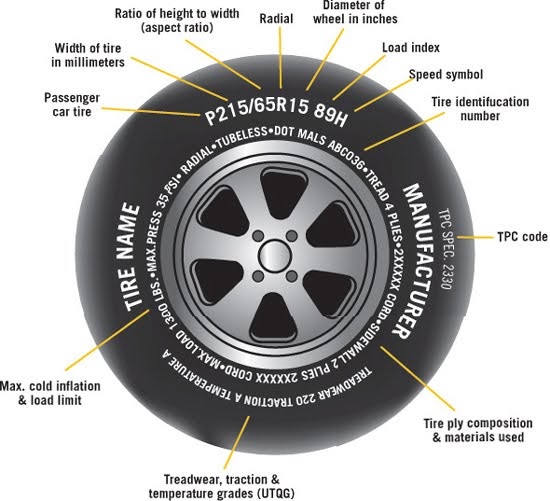 nine0003
nine0003
The country of manufacture of the tire is also important information. Please note: this is the country where the factory where the tire was made is located, and not the one in which the manufacturer is registered. So on tires bearing the names of world-famous Italian, French, German and Japanese brands on the sidewalls, you can find the inscription Made in Russia, tires of a Taiwanese brand can be made in Vietnam or Thailand, and Toyo tires can be labeled as Made in Japan, or and Made in Malaysia. nine0003
For sale in the EU countries, tires must carry the CE certification mark with the product conformity number to the requirements of the European standard ECE - e11. However, for any company that has anything to do with cars, the most important market is the US market, and tire manufacturers are no exception in this regard. Therefore, all tires around the world are marked with the DOT code, developed at the beginning of the century by DOT, the Department of Transportation (US Department of Transportation).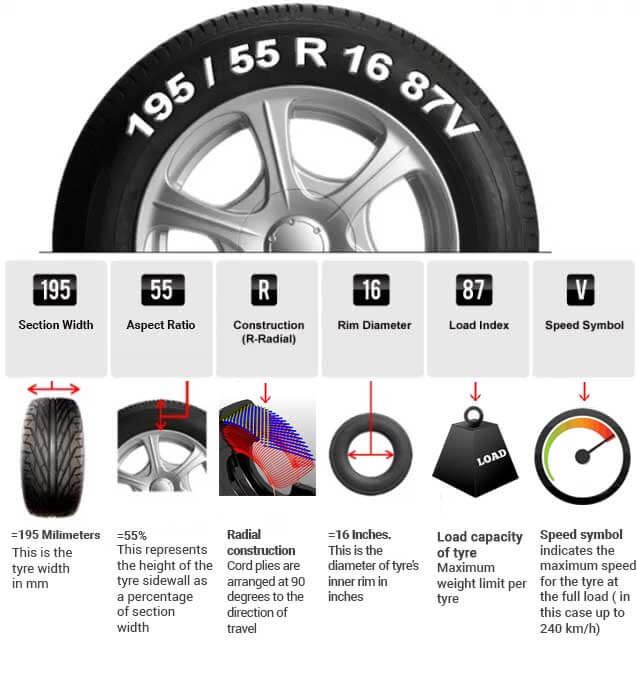 This alphanumeric code carries a lot of encrypted information, including the name of the manufacturer's brand and the country in which the tire-producing plant is located, size, type and a number of other features of the marked tire model. Some of this encrypted information duplicates other inscriptions on the side of the tire, but some data can only be found in this code. Alas, deciphering this code is not at all easy, you need to know the "inner kitchen" of the manufacturer or be able to use special applications. But some (at the same time very important) information can be obtained, so to speak, “with the naked eye”: the last two digits of the code indicate the year of manufacture of a particular tire, and the previous two digits indicate the week number. nine0003
This alphanumeric code carries a lot of encrypted information, including the name of the manufacturer's brand and the country in which the tire-producing plant is located, size, type and a number of other features of the marked tire model. Some of this encrypted information duplicates other inscriptions on the side of the tire, but some data can only be found in this code. Alas, deciphering this code is not at all easy, you need to know the "inner kitchen" of the manufacturer or be able to use special applications. But some (at the same time very important) information can be obtained, so to speak, “with the naked eye”: the last two digits of the code indicate the year of manufacture of a particular tire, and the previous two digits indicate the week number. nine0003
Why is this so important, you ask, because tires are not vegetables or sausages… Alas, in case of violation of storage conditions and rules for a long period of time, tires quite regularly lose their qualities. So if you buy a brand new looking set of tires that are 5-7 years old and have since been stored in an unheated warehouse and not in the recommended positions, you are very likely to run into balance problems and then very fast wear.
And on the sidewalls, a variety of additional information can be placed, for example, homologation codes. Homologation means that this tire model is approved by one of the automakers for use on cars of its own production. For example, code MO1 means that these tires are designed for Mercedes cars, tires with codes N0-N3 are recommended to be installed only on Volkswagen Touareg and Porshe, code AO says that these tires are approved by Audi, code A means that you have tires for Toyota Auris, and an asterisk (*) indicates that these tires are recommended for BMW vehicles. nine0003
In addition to the inscriptions on the sides, there is another important source of information. Since 2012, all tires sold in Europe have received a special label that must be stuck on the working surface of the tire. On this label, in addition to the article number, QR code and information about the manufacturer, tire model and size, you can find information on a number of important parameters, such as fuel efficiency and rolling resistance, external noise level and wet grip.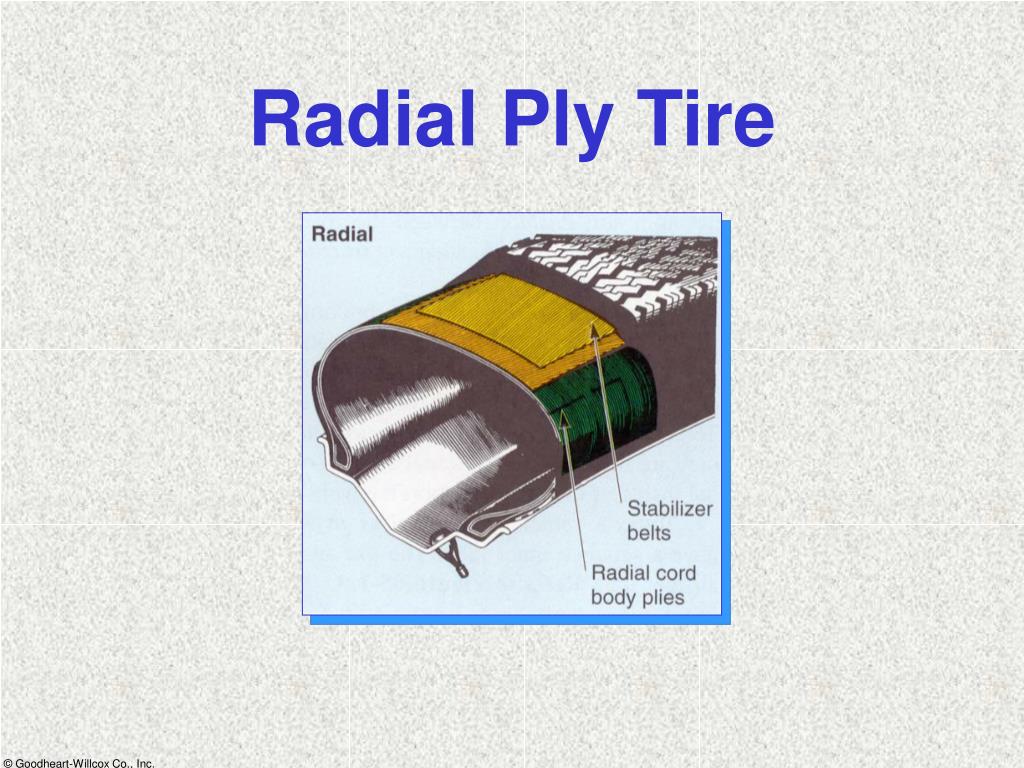 All this information is given in the form of visual pictograms and letter designations. For example, fuel efficiency is labeled A to G. Tires labeled A will have the lowest rolling resistance coefficient (about 6.5) and the highest fuel efficiency, while tires labeled G will have a drag coefficient of 12. For identical vehicles, equipped with such tires, the difference in fuel consumption per 1000 km will be about 6 liters! nine0003
All this information is given in the form of visual pictograms and letter designations. For example, fuel efficiency is labeled A to G. Tires labeled A will have the lowest rolling resistance coefficient (about 6.5) and the highest fuel efficiency, while tires labeled G will have a drag coefficient of 12. For identical vehicles, equipped with such tires, the difference in fuel consumption per 1000 km will be about 6 liters! nine0003
Similarly, the wet grip coefficient is ranked from A to F. The worse the grip, the longer the stopping distance, so the difference in stopping distance between a car traveling at 80 km/h and equipped with A-rated tires and F-rated tires is 18 meters.
Well, the level of acoustic comfort of a tire is indicated by a tire icon with schematic sound waves emanating from it. One wave means a quiet tire, the noise of which is at least 3 dB below the maximum permissible for Europe, two waves - a moderately noisy tire, the noise of which falls within the permissible limits, and therefore the operation of such tires in urban conditions is allowed.